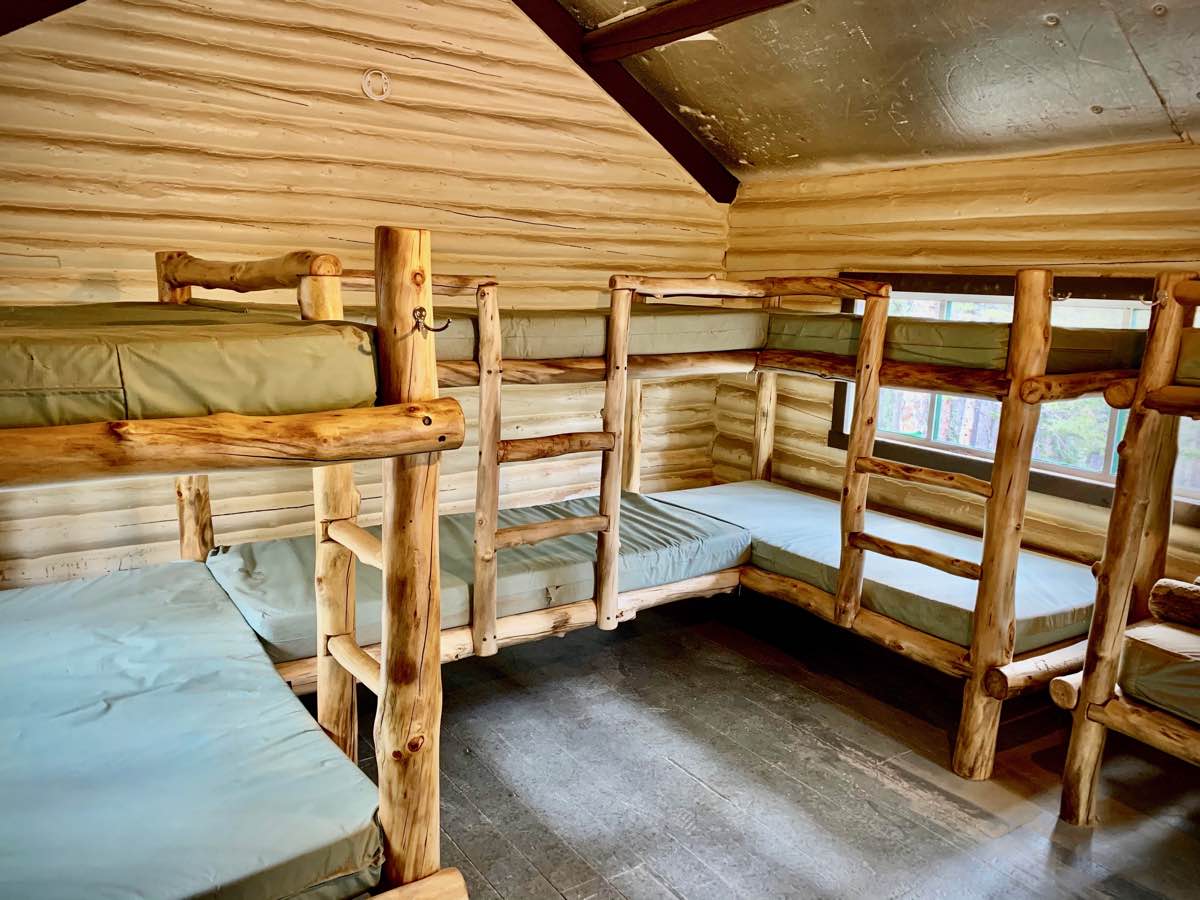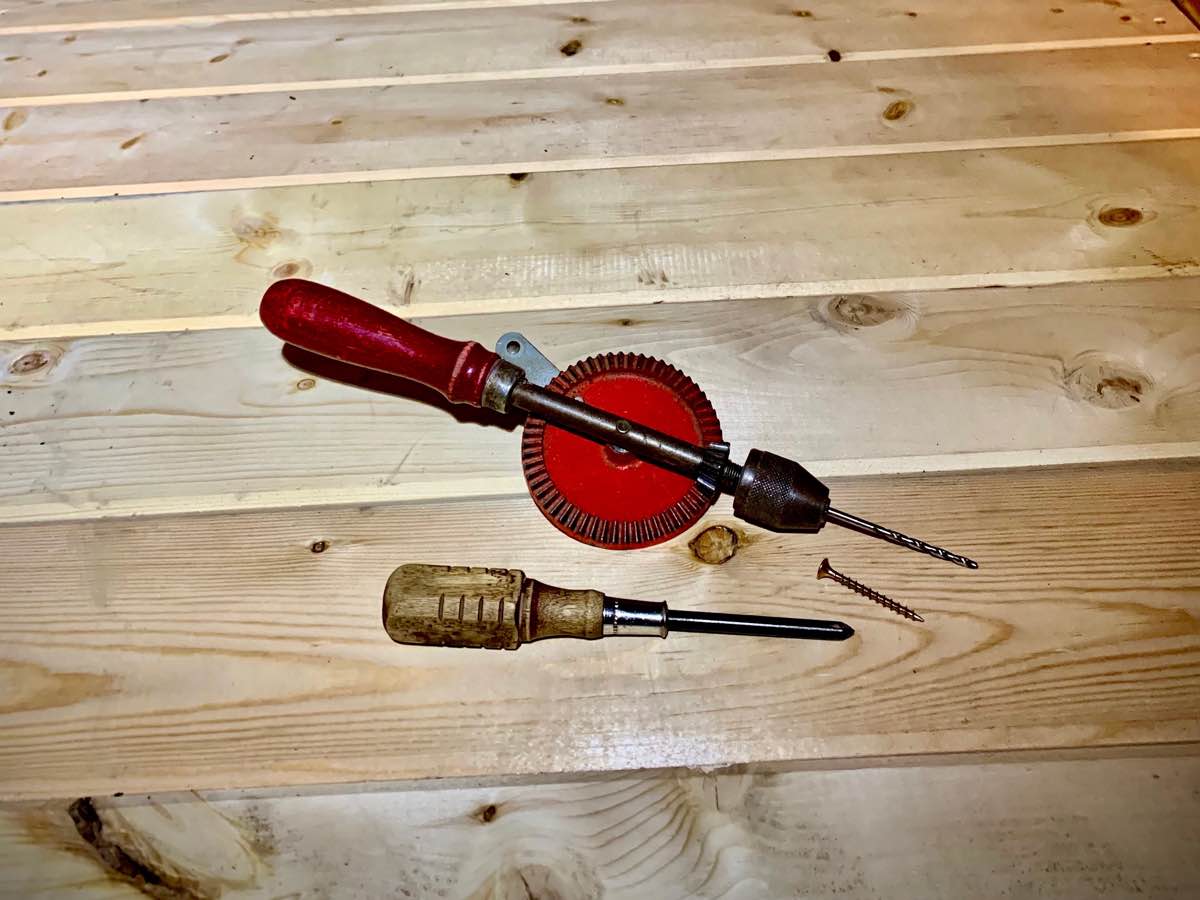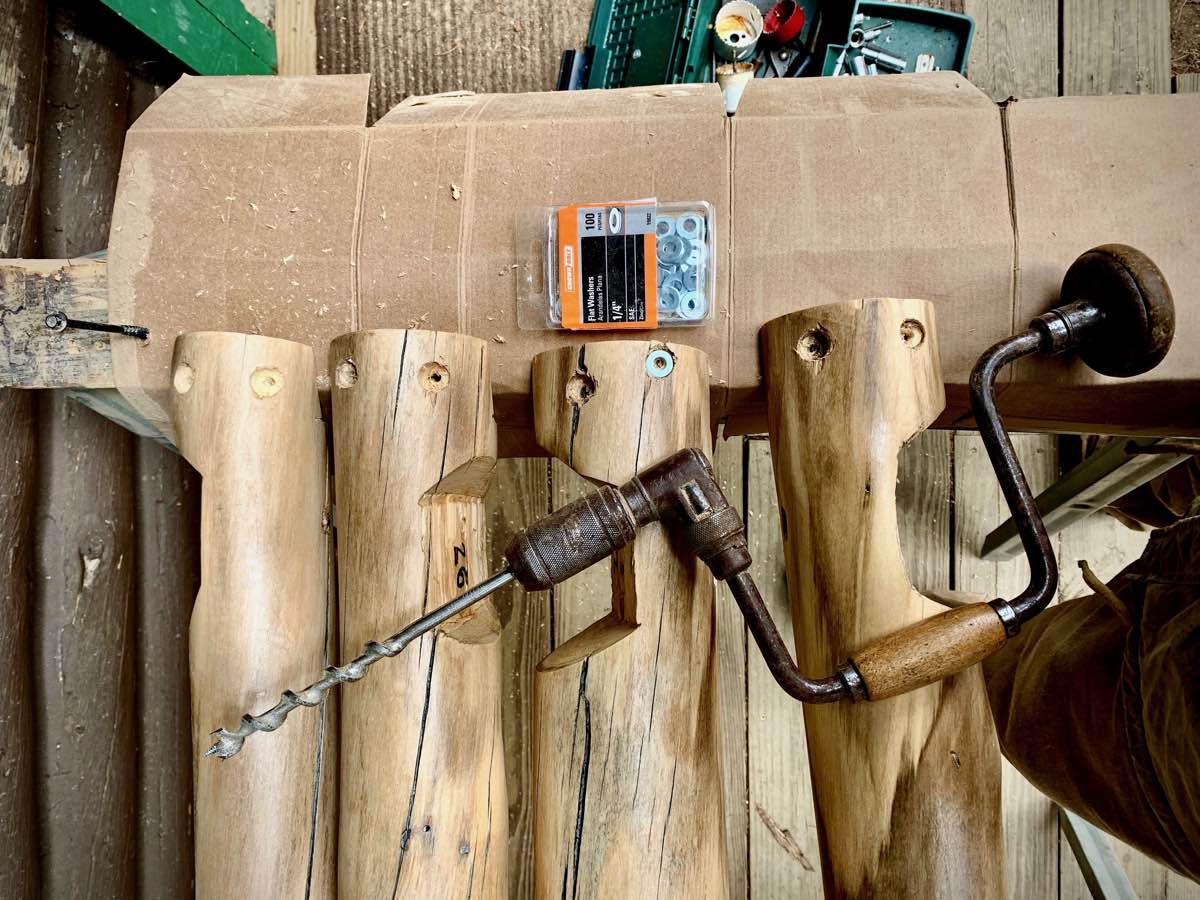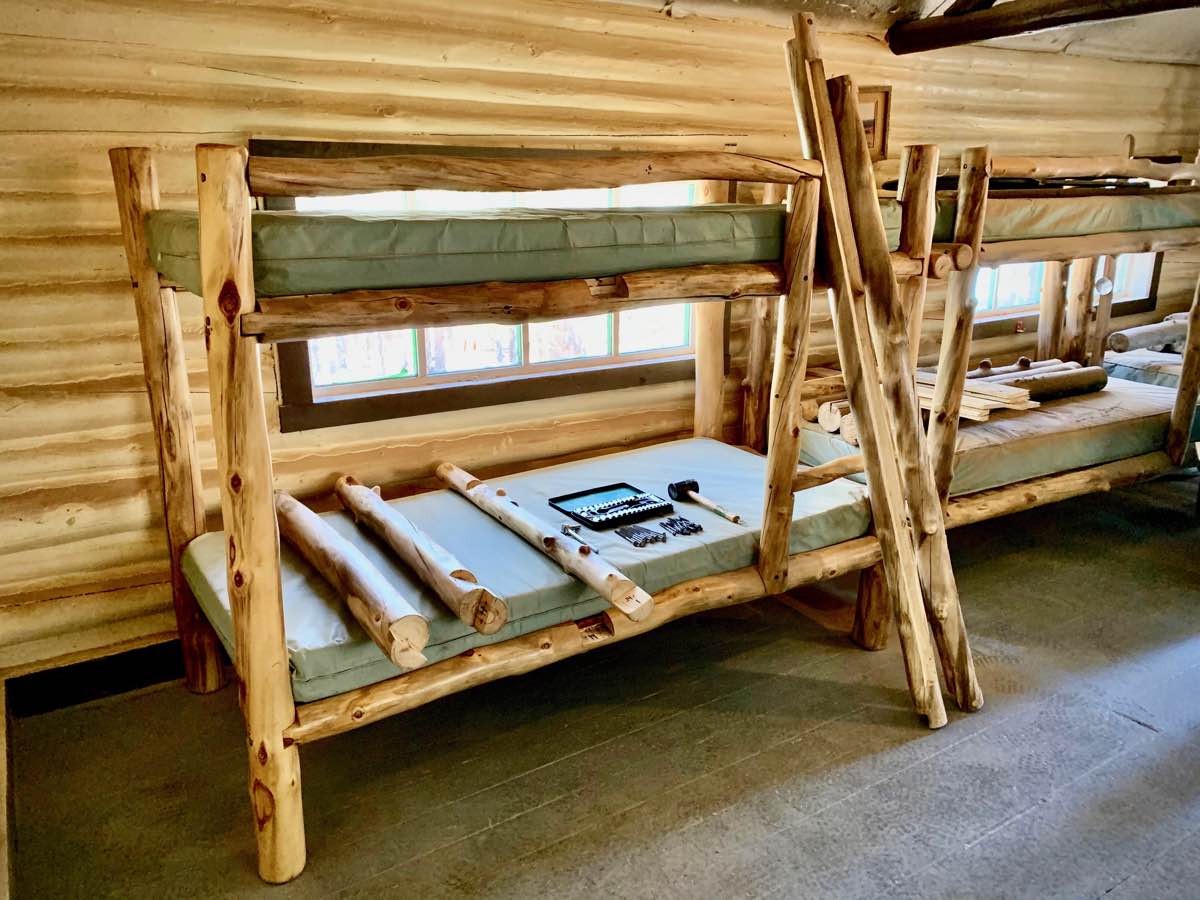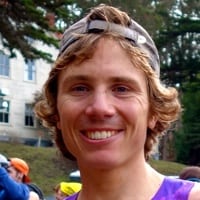This winter and spring I have been working on a special project at Barr Camp, where I live on Pikes Peak in Colorado. I have been building some bunk beds out of aspen logs that my co-caretakers and I gathered from the forest around the camp. We’ve been working on this project for over a year. First, my co-workers and I crafted five new bunk beds. We put one in our yurt and four more in our upper cabin. They all came out great, but to me, the upper cabin seemed incomplete. Sure, it had four really nice aspen bunk beds, but it also had two old metal ones.
Call me a perfectionist, but those two metal bunks just didn’t seem to fit. They stood out like two sore thumbs, one on each hand. It would be great to make two more bunks and get rid of these metal ones, I thought. But, the metal ones were sturdy and functional, and the aspen beds are a lot of work to build. Somehow I worked up the motivation, picked up my tools, and started plugging away at building two more bunk beds. It would be a long process, but I was committed.
As I worked, I also decided to do as much I could do by hand. I allowed myself a few power tools for things like sanding and drilling, but stuck to the old-fashioned stuff as much as reasonably (or maybe unreasonably) possible. I really got into it! Each task was its own little puzzle. Some things were simple, like cutting logs to size. But, then there were tasks like chiseling out the bed rails. It would have been so much easier to zip down the rails with a circular saw, but there I was, wailing away with a hammer and chisel.
Doing things by hand is hard, tedious, and at times, incredibly slow. It’s also very satisfying. It has this meditative and artful feel. I wasn’t just trying to get a job done; I was also leaning into the process.
I am pleased to report that the beds are now nearly finished. As I wind down this project, I’ve been cranking up on my training. I’ve also been drawing some connections between my bunk building and my training. I’m more artist than businessman in my running, too. In a world in which so much is measured by an end result, I remain a sucker for process. Of course, I want the finished product to be good, but I care about how I get there too.
With the beds, that meant fewer power tools and more sweat. In training, this means less technology and more feel. It helps that a week or two (three, four?) ago the strap on my old-school Casio watch busted. I started doing “cabin clock training,” where you look at the analog clock in the cabin, go running, and check the clock again when you return. If you can still remember what time you left, you do a rough calculation of how long you were gone. If you forget, oh well.
When I’m out on the trail, there aren’t any splits, Strava segments, or heart-rate data. It’s just me feeling it out, and leaning in. Even on workout days, I have no watch. I use landmarks and effort instead of distance and pace. The analysis is very simple: Did I run hard? Did I make it hurt? And in some cases, Did I empty the tank? If I can achieve my effort-level goal for the day, then I’m on the right track.
It can be easier to lean out instead of in. We pick a race and set a goal, and then forget all about enjoying the simple act of running itself. We obsess over the details: time, heart rate, weekly mileage, hours slept, calories burned, calories consumed, race weight. Workout days come and we obsess over splits. We strain instead of train and get frustrated when we fall short of our goal.
In life, we do the same. We set our sights on lofty goals. We fixate on the idea that achieving said goals will result in satisfaction. To quote Eminem, we act as if “Success is my only motherf**kin’ option, failure’s not.” We get so caught up in chasing out-there, intangible success that we miss out on the tangible joys which are always around us.
It reminds me of George Bailey from the timeless classic “It’s a Wonderful Life.” Though George worked in a bank, he never really planned to. George wanted to see the world and design buildings–to be an architect. He got into banking by happenstance, but was good at it and managed to help a lot of people along the way. While George never really did what he wanted to do, his life was still full. I like to think this was because George focused more on the how than the what. His life was meaningful not because of what he was doing, but because of how he did it. I guess you could say he leaned in.
Many times in life we focus on the what. What do you want to be when you grow up? What do you want to achieve? What time do you want to run? What race do you want to finish? These questions can seem daunting because we tend to think that there is a singular way to success. There is one job we are meant to get, one school to get into, one degree to achieve, one interval split to hit. I’m starting to realize, though, that there are a million things we can do. And what will deem me successful is not what I do, but how I pursue it.
So resist the urge to rush about, chasing deadlines with your head buried in the sand, and make sure to look around at the beauty around you. Put down the power tools and enjoy, at least for a little while, a hammer and chisel. Go for a run and leave the watch at home, and then bask in the satisfaction of how you feel afterward, not the numbers on your wrist. Be a banker if it’s banking that finds and impassions you. Lean in.
Call for Comments (from Meghan)
- Are you leaning into something process-oriented right now, either in your running or in life?
- Without races as our horizon goals, are you enjoying or being challenged by the training process?
